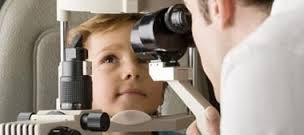
Every week at our Medical Center’s Clinical Conferences we get an in depth presentation about some aspect of our Medical Center. These conferences give us all a chance to learn about the latest in research or patient care, about a unique surgical procedure, how a new piece of equipment is being used or about a specific facility and what is being done there.
Last week’s presentation “Low vision – not the end of the road,” gave us all a better insight into the work of the Michaelson Institute for the Rehabilitation of Vision, headed by Dr. Claudia Yahalom, and how it impacts the community. Also known as the Pediatric Low Vision Clinic, Hadassah specialists see patients from all over the country at the Michaelson Institute’s downtown Jerusalem center and at Hadassah-Ein Kerem. The Michaelson Institute is part of Hadassah’s Center for Pediatric Ophthalmology headed by Dr. Irene Anteby.
For the parents of children with severe vision problems and eye diseases, their initial visit to the Michaelson Institute is both upsetting and comforting. Upsetting, because they begin to comprehend the challenges they face; comforting, because they immediate realize an extremely caring and highly competent team is there to support them.
“At our clinic – the only one of its kind in the country – we do more than treat the problem or the disease,” says Dr. Yahalom. “We give parents the explanation they so desperately seek, we teach children how to live with their condition– and we give everyone hope and help.”
She and Dr. Karen Hendler are the ophthalmologists on the Michaelson Institute multidisciplinary team that includes a genetic counselor, optometrist and a social worker – all with expertise and training in low vision. They see just eight children a day, who come from throughout the country – about 1,200 in the last year. “We need to have extra time to give the parents emotional support and understanding. We need time to respond to the children’s psychological and social needs. We need time to teach them how to cope with their condition and introduce them to special visual aids, like a laptop with a camera that zeros in on an object or a person, or telescopic glasses so they can see the blackboard.”
Most of their patients are very young – some as little as two months old. That is when the child misses a developmental milestone and the parents begin to realize their child has a problem.
Making the proper diagnosis is the team’s first objective. “There are many rare diseases that even pediatric ophthalmologists don’t recognize,” Dr. Yahalom says. Yet, what is considered a rare disease in other places is rather common at Hadassah.
“I remember one mother who was told that her two-month-old baby was blind. We identified his condition as Albinism, an inherited disorder that results in a complete or partial absence of pigment in the eyes, causing decreased vision. Then we knew what to do and how to help. Now he is ten months, developing just like any other toddler and learning to use the vision he has.”
The social worker is there to help the family adjust; advise them of their rights and the services they can receive. At the same time, the genetic counselor tries to find the root of the problem to prevent the disease from re-occurring in future births. She works hand-in-hand with Hadassah’s Laboratory for Ocular Genetics, headed by Dr. Anat Blumenfeld. Once the specific mutation causing the disease in the family has been found, the genetic counselor can guide the family on how the disease may influence their future family planning.
Hadassah is a national center for Albinism and Nystagmus, the unintentional jittery movement of the eyes, which interferes with vision. “We don’t have a cure, but many times surgery can help,” Dr. Yahalom says, recalling a 10-month-old girl with Nystagmus and strabismus, commonly known as ‘crossed eyes.’ ”She showed signs of delayed visual and motor development. After we operated on her eye muscles and gave her glasses, both began to develop normally.”
At the end of the day, after all the patients have left, Dr. Yahalom turns to her research. These days she is pleased that her article on the genetic links to Albinism will soon be printed in The British Journal of Ophthalmology and is beginning to expand the next phase of her research.
